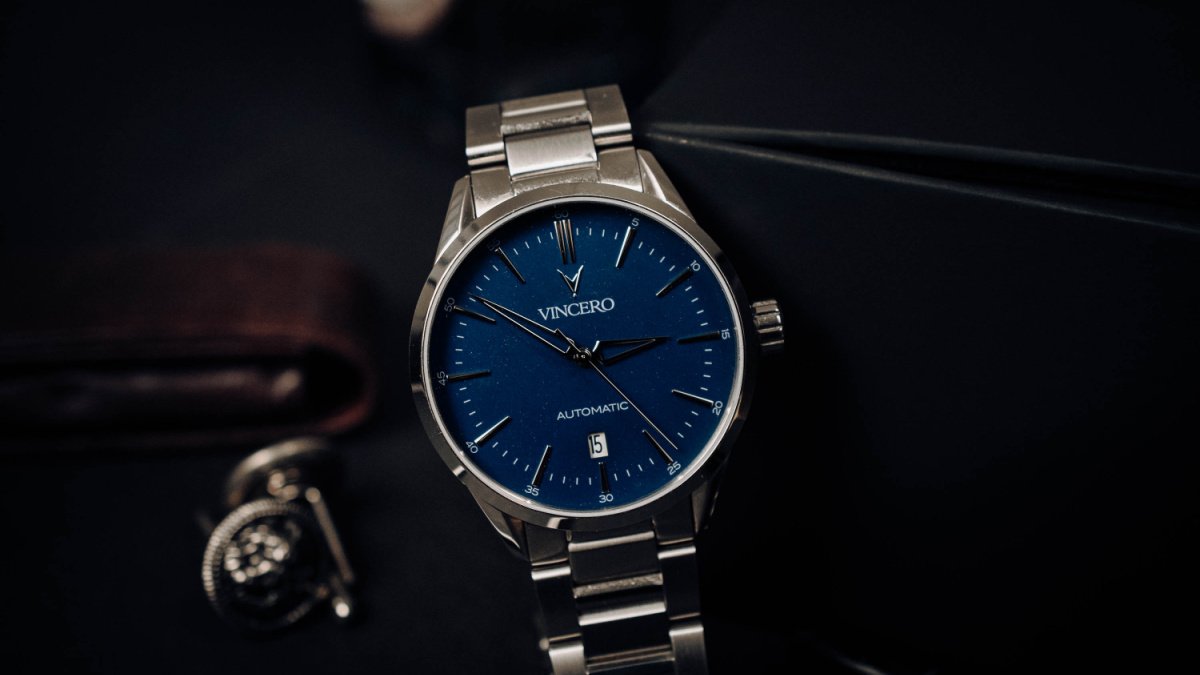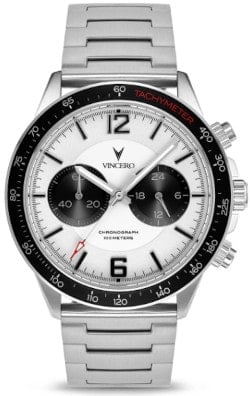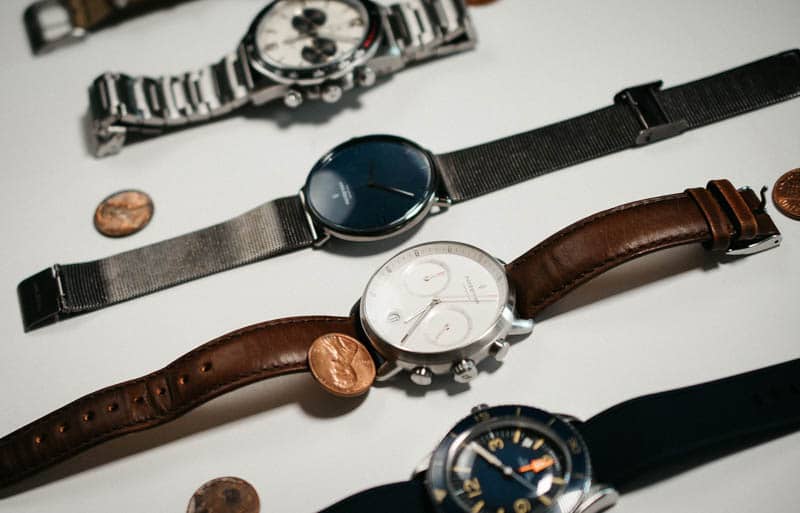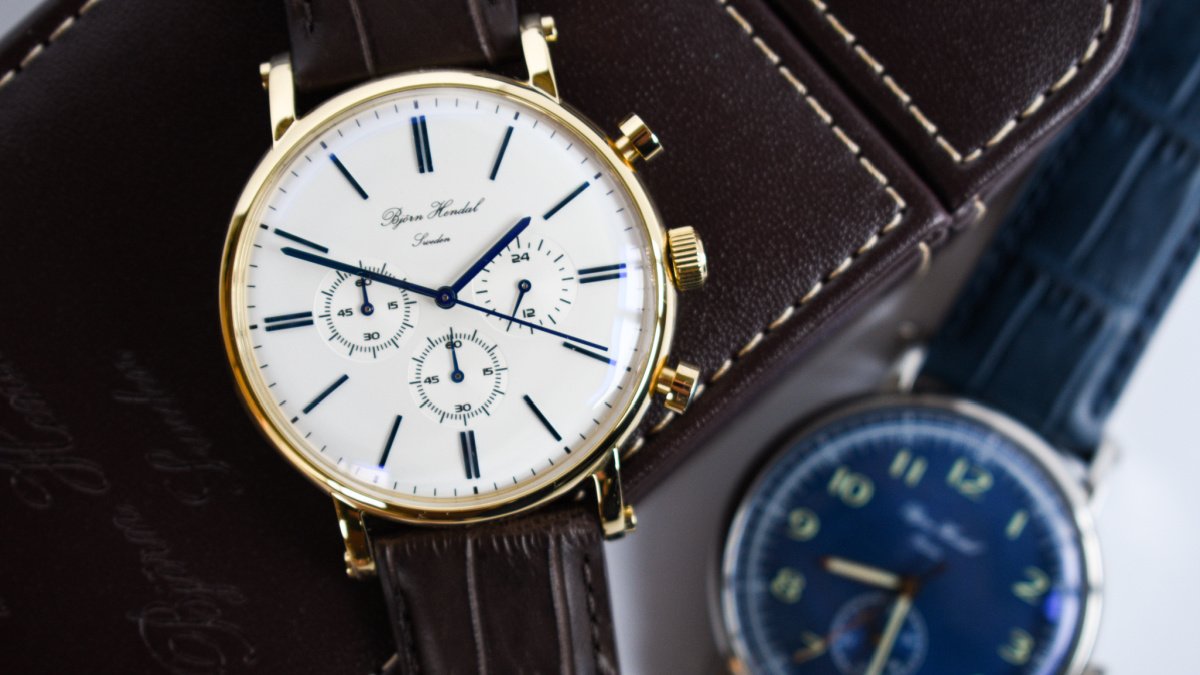What are the different types of watch glass?
Sapphire is the premium watch crystal, providing both excellent clarity and unmatched scratch-resistance. However, mineral crystals are more shatter-proof and can be treated with a scratch-protective sapphire coating. Plastic-constructed acrylic is the most shatterproof, but very prone to scratches. It’s also the most affordable.
Have you ever considered buying two similar watches, and noticed that the one with the sapphire crystal came with a hefty premium?
Or wondered why certain mid-tier watches that are functionally impressive come with a cheap dial glass?
Ultimately, watch crystals are there to protect the dial and the movement, so it’s important to know the differences and nuances.
We’re going to help you differentiate the three types of watch glass, sapphire crystal, mineral, and acrylic, so you can find your preference and what’s worth paying for.
Skip Ahead
3 Main Types of Watch Glass and How to Maintain Them
Sapphire Crystal

Sapphire crystals were first used as dial protectors in the 1930s. After Rolex slapped one on to their ref. 5100 in 1970, sapphire became the go-to watch crystal for high-end brands like Omega and Patek. Rolex even developed a special green sapphire specifically for the Milgauss.
This ultra-hard crystal is lab-produced using very high temperatures, resulting in a premium scratch-resistant glass-like material that’s cool to the touch. It’s the hardest and most expensive of the watch crystals, and is often coated with anti-reflective treatment for better clarity.
New and innovative brands, like
This is especially beneficial with models like
Vincero’s Altitude line offers a cool design with versatile color schemes. While they’ve made some concessions to keep the price down, Vincero has delivered another great fashion-forward watch.
You’ll need to engage in some extra high-impact activity to get a sapphire crystal to shatter, but its brittle nature is the reason that military watches usually use acrylic or mineral dial protectors.
Pros:
- Sapphire is the best dial crystal for scratch-resistance.
- It offers effective clarity, especially when anti-reflective coating is applied.
- Boasting superior hardness, only diamonds and moissanite surpass sapphire.
Cons:
- Sapphire is the most expensive option.
- It’s not as shatter-proof as mineral and acrylic dial protectors.
Mineral Crystal
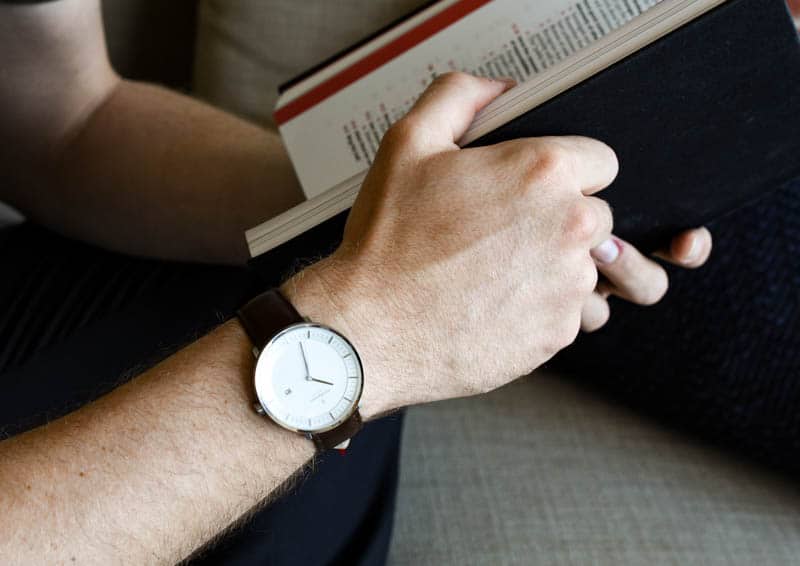
Untempered mineral crystals served as the very first watch protectors. Unfortunately, they were prone to shattering. Glass shards could also damage the dial face and even the movement.
Today, mineral crystals are tempered with chemical and heat treatments to make them harder and stronger. They’re more scratch-resistant than acrylic dial protectors, and are more likely to chip rather than shatter, unlike sapphire crystals.
Mineral crystals are the most common among mid-tier watch brands, since they’re inexpensive to produce, but provide great clarity and durability.
Pros:
- Mineral crystals provide excellent clarity and great durability.
- They’re more flexible than sapphire, so are less likely to shatter.
- They’re inexpensive and easy to produce and replace.
Cons:
- Mineral crystals aren’t as scratch-resistant as sapphire, and are also difficult to buff and polish.
- If a mineral crystal gets chipped or scratched, it will need full replacement.
Acrylic Crystal

Acrylic “crystal” is made of plastic, and goes by many names including Lucite, plexiglass, and Perspex. Acrylic is the weakest, easiest to scratch, and also the most affordable.
Besides its accessible price, acrylic does have a few upsides. It’s super lightweight and mild scratches are easily repaired. The material’s softness also makes acrylic watch glasses easy to mold. You can have super flat crystals or vintage-inspired domed crystals that provide a fun visual distortion at certain angles.
Timex and Junghans, as examples, often use acrylic crystals for their budget timepieces. Yet, they’re still known for their well-designed core lines. So yes, acrylics are cheap, but not industry castaways.
Pros:
- Acrylic crystals are cheap to make, buy, repair, and replace.
- They’re soft and easy to manipulate into different shapes and styles.
- They’re impact-resistant.
Cons:
- Acrylic crystals are the weakest option and are easily scratched or marked.
- They aren’t as clear as sapphire or mineral crystals.
What Watch Glass is the Most Scratch Resistant?

Sapphire crystal is the bonafide champion of scratch-resistance. This is why they’re preferred in the luxury field. On the Mohs scale of mineral hardness, sapphire scores a 9 out of 10, just behind diamonds and moissanite.
However, sapphire-coated mineral glass is like a cheat code to get around paying the sapphire premium.
For example, the Seiko SZSB012 is an excellent automatic watch, but it features a simple mineral protector. Perhaps the production dollars were focused on the function and design front.
Meanwhile, Vincero’s Icon also runs on a robust Seiko automatic movement, but its protective glass is more scratch-resistant because it’s sapphire coated. It serves up the sapphire experience without comprising price, function, and style.
How to Remove Scratches from your Watch Glass
Step 1: Protect Your Bezel
Use masking tape to cover your bezel, similar to when you paint a room.
Step 2: Buff the Scratch Out
Do this delicately using a cloth and small circular motions.
Polywatch polish is a popular choice because it uses micro-sized diamond particles to remove scratches, which is similar to what professionals do.
A tiny amount of toothpaste is an often used home remedy, since it gently sands down uneven surfaces.
The industry standard for removing scratches from watch glass.
Step 3: Wipe the Excess Off
Clean off your polish with a fresh cloth or paper towel. You can also use a finer glass polish to give that crystal some shine. Make sure the watch is facing down when you do that though.
Step 4: Repeat
Repeat the process if the scratch is still visible, remaining gentle throughout the buffing and wiping process.
Crystal Clear
If you’re on a budget, acrylic crystals on stylish watches like the Timex Weekender do the job just fine. Even if you do end up breaking it, you won’t lose much time or money getting it repaired.
Depending on where their focusing their production dollars, brands will build mid-tier watch lines with either impact-resistant mineral or premium scratch-resistant sapphire. The good news is that young brands like
Despite a few minor inconsistencies in band stiffness, in terms of build quality and beauty of design, Vincero provides excellent value for money at its price point.
And if you want to drop a bundle on a Swiss hard-hitter, you’re definitely getting that high-grade AR-coated scratch-resistant sapphire.
FAQs
Does sapphire glass break easily?
Sapphire is strong and almost as hard as diamond, so it doesn’t break easily. However, it isn’t perfectly shatterproof.
What glass does Rolex use?
As all premium Swiss watch brands do, Rolex uses a sapphire crystal for all of their contemporary models.
Is mineral glass better than sapphire glass?
No, not for watch crystals. Sapphire glass is the perfect combination of durable, clear, and scratch-resistant. While mineral crystal, as a substance, is more likely to chip than shatter, even the highest-impact lifestyle likely won’t shatter sapphire watch crystals.
